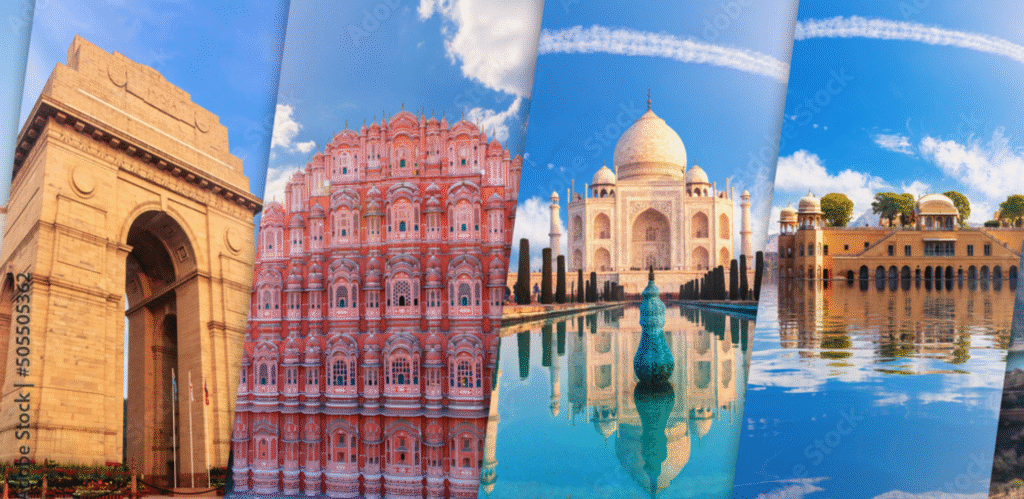
Golden Triangle with Ranthambore: Heritage & Wildlife Escape
The Golden Triangle of India, encompassing Delhi, Agra, and Jaipur, is a famed tourist route that offers a kaleidoscope of experiences, combining rich heritage, architectural marvels, and vibrant culture. However, when one adds Ranthambore National Park into this mix, it transforms into an unparalleled journey of adventure and wildlife exploration. This compelling escape reveals the contrast between historical grandeur and untamed nature, inviting travelers to immerse themselves in both the cultural and natural riches of India.
1. The Golden Triangle: A Historical Overview
The Golden Triangle is pronounced not only for its geographic shape on the map but also for its historical significance and architecturashowcasing Mughal architecture.
Qutub Minar**: The tallest brick minaret in the world, steeped in history.
Taj Mahal**: An iconic symbol of love, this ivory-white marble mausoleum is one of the Seven Wonders of the World.
Agra Fort**: Another UNESCO World Heritage Site, it offers glimpses into the majestic Mughal era.
. Jaipur
Hawa Mahal**: Known as the Palace of Winds, this intricately designed building is a marvel of architecture.
Amber Fort**: Famous for its blend of Hindu and Mughal architecture, it is set against a picturesque backdrop.
Each city in the Golden Triangle breathes history and showcases diverse artistic brilliance, making it a treasure trove for history enthusiasts.
. Ranthambore National Park: A Thrilling Wildlife Haven
Transitioning from the ancient to the wild, Ranthambore National Park serves as a crucial counterpoint to the architectural wonders of the Golden Triangle. Located in Rajasthan, this former royal hunting ground is one of the largest national parks in northern India and is famed for its diverse flora and fauna.
Wildlife & Biodiversity
Tigers**: Ranthambore is renowned for its tiger population, offering visitors a chance to see these majestic creatures in their natural habitat.
Other Wildlife: The park is home to various species, including leopards, sambar deer, and over 300 bird species, making it a birdwatcher’s paradise.
Floa Safari
The varied landscape of Ranthambore consists of deciduous forests, grasslands, and lakes, providing an ideal habitat for wildlife. Travelers can explore the unique biodiversity, including banyan trees, dhonk, and other native flora.
3. Adventure Activities in Ranthambore
Ranthambore offers a plethora of activities that allow visitors to engage with its natural beauty actively. Here are some popular activities:
.1 Jungle Safaris
Jeep Safaris**: A guided tour through the park that allows for closer wildlife sightings.
Canter Safaris**: Larger vehicles designed for group tours that provide a broader perspective of the park’s immense landscape.
3.2 Bird Watching
For enthusiasts, bird watching in Ranthambore is a joyful experience. Some notable sights include the Painted Stork, Crested Serpent Eagle, and the Indian Pitta.
3.3 Photography Tours
Photographers can take advantage of both the breathtaking landscapes and the opportunity to capture wildlife in action. Early morning and late afternoon are ideal for capturing stunning shots.
4. Perfect Itinerary for a Memorable Experience
Planning a trip that combines the Golden Triangle with Ranthambore requires an efficient itinerary. Here’s a suggested plan for a week-long journey:
1. **Day 1-2**: Arrive in Delhi, explore major landmarks.
2. **Day 3**: Travel to Agra; visit the Taj Mahal and Agra Fort.
3. **Day 4**: Depart for Jaipur; explore the local culture and historical sites.
4. **Day 5**: Drive to Ranthambore; enjoy an evening safari.
5. **Day 6**: Full-day exploration through various safaris.
6. **Day 7**: Return to the city of your choice or extend the stay for more adventures.


Comments are closed